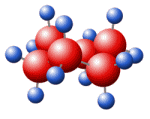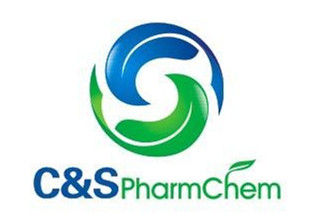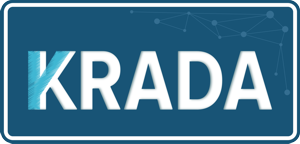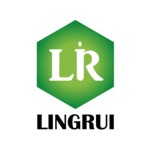|
|
|

|
Suppliers for
Bronopol
|
Properties | | CAS |
52-51-7 | | Formula |
C3H6BrNO4 | | EINECS |
200-143-0 |

|
|
15 Registered suppliers
| Character | White Or Almost White Crystalline Powder
| | Identification |
| | A | IR Positive
| | B | Properties
| | C | M.P. 125-132°C
| | Assay (Hplc%) | 99.00-101.00
| | Related | Hplc
| | PH VALUE (1% W/V AT 20°C) | 4-7
| | Moisture (Karl Fischer Method %) | 0.5 Max
| | Sulphated Ash (%) | 0.1 Max
| | Fineness (10 Mesh Pass %) | 95 Min
| | Solubitity Test(20% Water Solution %) | Clear Or Nearly Clear Solution,Free Of Foreign Particles
| | Appearance Of Solution(20% W/V In Ch3oh) | Clear Or Nearly Clear Solution,Free Of Foreign Particles
| | Trihydroxymethyl Nitromethane (%) | 0.3 Max
| | 2-Methyl-2-Nitropropane-1,3-Diofe(%) | 0.3 Max
| | 2-Nitroethanol (%) | 0.3 Max
| | Sodium Bromide (%) | 0.3 Max |
| Character | White Or Almost White Crystalline Powder
| | Identification |
| | A | IR Positive
| | B | Properties
| | C | M.P. 125-132°C
| | Assay (Hplc%) | 99.00-101.00
| | Related | Hplc
| | PH VALUE (1% W/V AT 20°C) | 4-7
| | Moisture (Karl Fischer Method %) | 0.5 Max
| | Sulphated Ash (%) | 0.1 Max
| | Fineness (10 Mesh Pass %) | 95 Min
| | Solubitity Test(20% Water Solution %) | Clear Or Nearly Clear Solution,Free Of Foreign Particles
| | Appearance Of Solution(20% W/V In Ch3oh) | Clear Or Nearly Clear Solution,Free Of Foreign Particles
| | Trihydroxymethyl Nitromethane (%) | 0.3 Max
| | 2-Methyl-2-Nitropropane-1,3-Diofe(%) | 0.3 Max
| | 2-Nitroethanol (%) | 0.3 Max
| | Sodium Bromide (%) | 0.3 Max |
| Character | White Or Almost White Crystalline Powder
| | Identification |
| | A | IR Positive
| | B | Properties
| | C | M.P. 125-132°C
| | Assay (Hplc%) | 99.00-101.00
| | Related | Hplc
| | PH VALUE (1% W/V AT 20°C) | 4-7
| | Moisture (Karl Fischer Method %) | 0.5 Max
| | Sulphated Ash (%) | 0.1 Max
| | Fineness (10 Mesh Pass %) | 95 Min
| | Solubitity Test(20% Water Solution %) | Clear Or Nearly Clear Solution,Free Of Foreign Particles
| | Appearance Of Solution(20% W/V In Ch3oh) | Clear Or Nearly Clear Solution,Free Of Foreign Particles
| | Trihydroxymethyl Nitromethane (%) | 0.3 Max
| | 2-Methyl-2-Nitropropane-1,3-Diofe(%) | 0.3 Max
| | 2-Nitroethanol (%) | 0.3 Max
| | Sodium Bromide (%) | 0.3 Max |
| Character | White Or Almost White Crystalline Powder
| | Identification |
| | A | IR Positive
| | B | Properties
| | C | M.P. 125-132°C
| | Assay (Hplc%) | 99.00-101.00
| | Related | Hplc
| | PH VALUE (1% W/V AT 20°C) | 4-7
| | Moisture (Karl Fischer Method %) | 0.5 Max
| | Sulphated Ash (%) | 0.1 Max
| | Fineness (10 Mesh Pass %) | 95 Min
| | Solubitity Test(20% Water Solution %) | Clear Or Nearly Clear Solution,Free Of Foreign Particles
| | Appearance Of Solution(20% W/V In Ch3oh) | Clear Or Nearly Clear Solution,Free Of Foreign Particles
| | Trihydroxymethyl Nitromethane (%) | 0.3 Max
| | 2-Methyl-2-Nitropropane-1,3-Diofe(%) | 0.3 Max
| | 2-Nitroethanol (%) | 0.3 Max
| | Sodium Bromide (%) | 0.3 Max |
| Character | White Or Almost White Crystalline Powder
| | Identification |
| | A | IR Positive
| | B | Properties
| | C | M.P. 125-132°C
| | Assay (Hplc%) | 99.00-101.00
| | Related | Hplc
| | PH VALUE (1% W/V AT 20°C) | 4-7
| | Moisture (Karl Fischer Method %) | 0.5 Max
| | Sulphated Ash (%) | 0.1 Max
| | Fineness (10 Mesh Pass %) | 95 Min
| | Solubitity Test(20% Water Solution %) | Clear Or Nearly Clear Solution,Free Of Foreign Particles
| | Appearance Of Solution(20% W/V In Ch3oh) | Clear Or Nearly Clear Solution,Free Of Foreign Particles
| | Trihydroxymethyl Nitromethane (%) | 0.3 Max
| | 2-Methyl-2-Nitropropane-1,3-Diofe(%) | 0.3 Max
| | 2-Nitroethanol (%) | 0.3 Max
| | Sodium Bromide (%) | 0.3 Max |
EINECS :200-143-0
Molecular formula :C3H6BrNO4
EINECS :200-143-0
Molecular formula :C3H6BrNO4
EINECS :200-143-0
Molecular formula :C3H6BrNO4
EINECS :200-143-0
Molecular formula :C3H6BrNO4
EINECS :200-143-0
Molecular formula :C3H6BrNO4
EINECS :200-143-0
Molecular formula :C3H6BrNO4
Melting Point: 130-133 ° C (lit.)
Flash point :167 ° C
Water solubility :25 g / 100 mL (22 ºC)
Merck :14, 1447
BRN: 1705868
Stability:Stable. Hygroscopic. Incompatible with strong oxidizing agents, strong bases, strong reducing agents, acid chlorides and anhydrides, moisture.
Chemical nature: This product is colorless or yellow-brown crystal. M.p. 130 ° C and a vapor pressure of 1.68 × 10-3 Pa. Soluble in acetone, 2-methoxy ethanol, toluene and other organic solvents, 22 ° C water solubility of 250g / L. Industrial purity higher than 90%, a slight hygroscopicity.
Usage:
1.Bactericidal Can effectively control a variety of plant pathogenic bacteria. Cotton seed treatment can prevent cotton leaf spot disease caused by cotton black-arm disease, bacterial cariosis, no injury to cotton. Can also be used for rice bakanae disease. Recommended concentration of 800 ~ 1000mg / L.
2. Mainly used in cosmetics, leather preservative, mainly used in agriculture, rice bakanae disease control
3. Biocide, mainly used for industrial circulating water, paper pulp, paint, plastics, cosmetics, wood, cooling water circulation system, and industrial use of sterilization, mold, corrosion, algae and so on.
4. Widely used in water treatment, medicine, pesticides, cosmetics, detergents and other industries as preservatives and sterilants
5. Cosmetic preservative added to shampoos, balms and creams and other cosmetic processing, the bactericidal concentration in cosmetics 0.01% -0.02%. Can also be used for detergents, fabric treatment agent.
6. A broad spectrum of highly efficient industrial fungicides to prevent bacteria and algae in papermaking, industrial cooling water, metalworking lubricants, pulp, wood, paint and plywood in the growth and reproduction, and can do slime control Agent, widely used in paper pulp and recycled paper cooling water system.
7. Mainly used for pharmaceutical disinfectants, cosmetic preservatives, but also for pesticide treatment agent
Brief manufacture process:
In the reactor, metered nitromethane, formaldehyde, water and ethanol were added, and 40% liquid alkali was added dropwise under cooling. At this time, solid was precipitated and bromine was added dropwise. After stirring, the water was distilled off under reduced pressure. Ethanol, after cooling, crystallization, filtration, drying advanced bromine nitrate, yield ≥ 70%, about 93%.
Melting Point: 130-133 ° C (lit.)
Flash point :167 ° C
Water solubility :25 g / 100 mL (22 ºC)
Merck :14, 1447
BRN: 1705868
Stability:Stable. Hygroscopic. Incompatible with strong oxidizing agents, strong bases, strong reducing agents, acid chlorides and anhydrides, moisture.
Chemical nature: This product is colorless or yellow-brown crystal. M.p. 130 ° C and a vapor pressure of 1.68 × 10-3 Pa. Soluble in acetone, 2-methoxy ethanol, toluene and other organic solvents, 22 ° C water solubility of 250g / L. Industrial purity higher than 90%, a slight hygroscopicity.
Usage:
1.Bactericidal Can effectively control a variety of plant pathogenic bacteria. Cotton seed treatment can prevent cotton leaf spot disease caused by cotton black-arm disease, bacterial cariosis, no injury to cotton. Can also be used for rice bakanae disease. Recommended concentration of 800 ~ 1000mg / L.
2. Mainly used in cosmetics, leather preservative, mainly used in agriculture, rice bakanae disease control
3. Biocide, mainly used for industrial circulating water, paper pulp, paint, plastics, cosmetics, wood, cooling water circulation system, and industrial use of sterilization, mold, corrosion, algae and so on.
4. Widely used in water treatment, medicine, pesticides, cosmetics, detergents and other industries as preservatives and sterilants
5. Cosmetic preservative added to shampoos, balms and creams and other cosmetic processing, the bactericidal concentration in cosmetics 0.01% -0.02%. Can also be used for detergents, fabric treatment agent.
6. A broad spectrum of highly efficient industrial fungicides to prevent bacteria and algae in papermaking, industrial cooling water, metalworking lubricants, pulp, wood, paint and plywood in the growth and reproduction, and can do slime control Agent, widely used in paper pulp and recycled paper cooling water system.
7. Mainly used for pharmaceutical disinfectants, cosmetic preservatives, but also for pesticide treatment agent
Brief manufacture process:
In the reactor, metered nitromethane, formaldehyde, water and ethanol were added, and 40% liquid alkali was added dropwise under cooling. At this time, solid was precipitated and bromine was added dropwise. After stirring, the water was distilled off under reduced pressure. Ethanol, after cooling, crystallization, filtration, drying advanced bromine nitrate, yield ≥ 70%, about 93%.
Melting Point: 130-133 ° C (lit.)
Flash point :167 ° C
Water solubility :25 g / 100 mL (22 ºC)
Merck :14, 1447
BRN: 1705868
Stability:Stable. Hygroscopic. Incompatible with strong oxidizing agents, strong bases, strong reducing agents, acid chlorides and anhydrides, moisture.
Chemical nature: This product is colorless or yellow-brown crystal. M.p. 130 ° C and a vapor pressure of 1.68 × 10-3 Pa. Soluble in acetone, 2-methoxy ethanol, toluene and other organic solvents, 22 ° C water solubility of 250g / L. Industrial purity higher than 90%, a slight hygroscopicity.
Usage:
1.Bactericidal Can effectively control a variety of plant pathogenic bacteria. Cotton seed treatment can prevent cotton leaf spot disease caused by cotton black-arm disease, bacterial cariosis, no injury to cotton. Can also be used for rice bakanae disease. Recommended concentration of 800 ~ 1000mg / L.
2. Mainly used in cosmetics, leather preservative, mainly used in agriculture, rice bakanae disease control
3. Biocide, mainly used for industrial circulating water, paper pulp, paint, plastics, cosmetics, wood, cooling water circulation system, and industrial use of sterilization, mold, corrosion, algae and so on.
4. Widely used in water treatment, medicine, pesticides, cosmetics, detergents and other industries as preservatives and sterilants
5. Cosmetic preservative added to shampoos, balms and creams and other cosmetic processing, the bactericidal concentration in cosmetics 0.01% -0.02%. Can also be used for detergents, fabric treatment agent.
6. A broad spectrum of highly efficient industrial fungicides to prevent bacteria and algae in papermaking, industrial cooling water, metalworking lubricants, pulp, wood, paint and plywood in the growth and reproduction, and can do slime control Agent, widely used in paper pulp and recycled paper cooling water system.
7. Mainly used for pharmaceutical disinfectants, cosmetic preservatives, but also for pesticide treatment agent
Brief manufacture process:
In the reactor, metered nitromethane, formaldehyde, water and ethanol were added, and 40% liquid alkali was added dropwise under cooling. At this time, solid was precipitated and bromine was added dropwise. After stirring, the water was distilled off under reduced pressure. Ethanol, after cooling, crystallization, filtration, drying advanced bromine nitrate, yield ≥ 70%, about 93%.
Detailed information on the suppliers of
Bronopol |
Properties:
... more properties and specification on Bronopol
|
|
Privileged suppliers
Last update 2024-04-29
|



 details
details details
details








